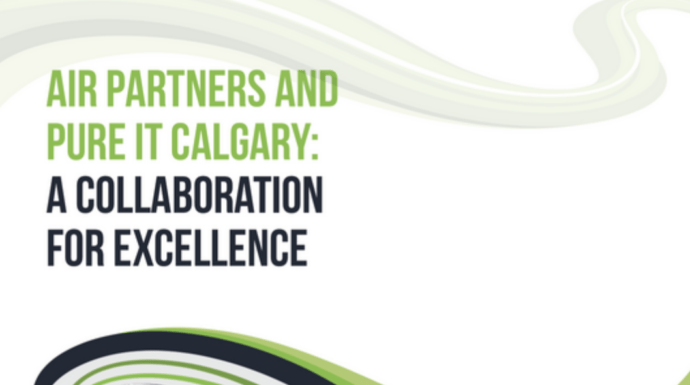Is Your Calgary Oil & Gas IT Company Aware Of The 2025 Cybersecurity Strategies: New Framework Demands Immediate Action
In 2025, the digital landscape in Calgary’s oil and gas sector faces unprecedented cybersecurity challenges. To safeguard critical assets effectively, your IT company must implement comprehensive protection strategies, including artificial intelligence-driven threat detection, robust infrastructure security, and advanced incident response protocols.
The oil and gas sector must prioritize cybersecurity to protect its vital infrastructure from increasingly sophisticated cyber threats. With the integration of innovative technologies and interconnected systems, your operations require enhanced security measures beyond traditional IT solutions.
Assessing your Calgary oil and gas company’s cybersecurity stance is essential for maintaining operational integrity and protecting valuable assets. Your IT provider should offer tailored solutions that address industry-specific vulnerabilities while ensuring compliance with evolving security standards.
Key Takeaways
- Modern cybersecurity strategies must incorporate AI-driven tools and comprehensive threat detection systems
- Regular security assessments and infrastructure evaluations are crucial for maintaining robust defence systems
- Industry-specific security solutions and incident response planning are essential for protecting critical assets
Understanding Cybersecurity in the Oil & Gas Sector
Cyber attacks target the oil and gas sector with increasing frequency and sophistication. Digital systems control critical infrastructure and operations, making robust security essential for protecting your assets and operations.
Evolving Threat Landscape
Oil and gas operations face sophisticated cyber threats targeting operational technology and IT systems. Diverse cyber threats can have severe consequences for your Calgary-based company.
Attackers commonly target:
- Industrial control systems
- SCADA networks
- Production monitoring systems
- Pipeline management infrastructure
Critical vulnerabilities include outdated software, unsecured remote access points, and interconnected operational technology systems. These weaknesses can lead to production disruptions, safety incidents, or data breaches.
Regulatory Requirements
Your organization must comply with strict cybersecurity regulations specific to the Canadian energy sector. Regular risk assessments and threat intelligence help identify potential vulnerabilities in your systems.
Key compliance areas include:
- Data protection standards for sensitive operational information
- Network security protocols for industrial control systems
- Employee training requirements for cybersecurity awareness
Continuous training programs are crucial for your staff to recognize and respond to threats. Your organization needs a proactive security stance to maintain regulatory compliance and protect critical assets.
2025 Strategic Cybersecurity Initiatives
The Canadian oil and gas sector faces sophisticated cyber threats that require comprehensive defensive measures and proactive security strategies to protect critical infrastructure, operational systems, and sensitive data.
Cybersecurity Framework Adoption
Your organization must implement the latest cybersecurity frameworks aligned with Canadian federal guidelines and industry standards. This includes NIST CSF 2.0 and the updated CSA security controls.
Regular security assessments and compliance audits need to become standard practice. These evaluations help identify security posture gaps and ensure alignment with regulatory requirements.
Integrate zero-trust architecture principles across your IT infrastructure. This approach validates every access request regardless of origin and implements strict access controls based on the principle of least privilege.
Advanced Threat Detection Systems
Deploy AI-powered security information and event management (SIEM) systems to monitor network activities 24/7. These systems can detect anomalies and potential threats in real time.
Your oil and gas cybersecurity strategy must include advanced endpoint detection and response (EDR) solutions. These tools provide comprehensive visibility into endpoint activities and automate threat response.
Implement network segmentation and industrial control system (ICS) monitoring to protect operational technology environments from cyber threats.
Strategic Risk Management
Develop a comprehensive incident response plan that addresses emerging cyber threats specific to the energy sector. Update these plans quarterly to account for new threat vectors.
Create a cybersecurity risk registry that prioritizes threats based on potential impact and likelihood. Focus resources on protecting your most critical assets first.
Train your employees regularly on cybersecurity best practices and conduct simulated phishing exercises. Human error remains a significant risk factor in security breaches.
Establish partnerships with cybersecurity information sharing networks to stay informed about industry-specific threats and mitigation strategies.
IT Infrastructure and Asset Protection
Modern oil and gas operations require robust digital safeguards to protect critical infrastructure and sensitive data from increasingly sophisticated cyber threats. Your IT systems need multiple layers of protection working together seamlessly.
Secure Network Architecture
Specialized cybersecurity solutions are essential for protecting your operational technology networks from threats. Your network architecture must include strict segmentation between IT and OT systems.
Network monitoring tools should provide real-time visibility into all traffic patterns and anomalies. This allows quick detection of potential intrusions or suspicious activities.
Implement redundant systems and backup networks to maintain operations if primary systems are compromised. Your redundancy planning should account for both hardware and network connectivity.
Data Encryption and Access Controls
Your sensitive operational data requires industry-specific protection through robust encryption standards. Encrypt data at rest and in transit.
Set up multi-factor authentication for all remote access points and critical systems. This adds an essential security layer beyond traditional passwords.
Create detailed access control lists that limit system permissions based on job roles. Regular audits of user access rights help prevent unauthorized system entry.
Configure automatic alerts for any attempted unauthorized access or unusual file transfers. Your security team should review these alerts daily.
Human Element of Cybersecurity
The human element poses the greatest cybersecurity risk to Calgary’s oil and gas companies, as cyber attackers frequently exploit human behaviours and vulnerabilities to access critical systems.
Employee Training and Awareness
Your workforce needs continuous cybersecurity education to protect against evolving threats. Regular training sessions must cover phishing identification, password security, and safe data handling practices.
Staff should learn to recognize common social engineering tactics used by cybercriminals targeting the oil and gas sector. This includes suspicious emails, unusual requests, and potential impersonation attempts.
Key Training Components:
- Quarterly cybersecurity awareness updates
- Simulated phishing exercises
- Security protocol compliance checks
- Mobile device security practices
Insider Threat Mitigation
Your organization must implement strict access controls and monitoring systems to prevent accidental and intentional insider threats.
Essential Security Measures:
- Multi-factor authentication for all system access
- Regular access privilege reviews
- Activity logging and monitoring
- Clear security violation protocols
Establish clear policies for handling sensitive data and maintain the integrity of your energy sector operations. Document all security procedures and ensure employees understand the consequences of policy violations.
Incident Response and Recovery Planning
Effective incident response and recovery planning form the backbone of your organization’s cybersecurity defense strategy. Protecting your assets requires both immediate action protocols and long-term recovery strategies.
Incident Response Protocols
Your organization needs clear, actionable steps for managing cybersecurity incidents. Establish an incident response plan that outlines immediate actions and communication strategies.
Create a dedicated incident response team with clearly defined roles and responsibilities. This team should include IT security specialists, legal advisors, and key stakeholders.
Regular emergency simulations and tabletop exercises help your team practice response procedures. These drills identify weaknesses in your protocols and build muscle memory for real incidents.
Document all incidents thoroughly, including response times, actions, and outcomes. This documentation proves invaluable for improving future responses and meeting regulatory requirements.
Business Continuity Planning
Your business continuity plan must address critical operations during and after a cyber incident. Identify and prioritize your critical data and assets to protect your most valuable resources.
Implement redundant systems and backup procedures to minimize operational disruptions. Test these systems regularly to verify their effectiveness.
Establish clear communication channels with stakeholders, including employees, clients, and regulatory bodies. Your plan should detail when and how to notify affected parties.
Consider implementing automated recovery procedures where possible. These systems can help reduce downtime and maintain business operations during incidents.
Investment in Cybersecurity
Cybersecurity threats in the oil and gas sector require substantial financial commitment to protect critical infrastructure and sensitive data. Effective defense demands strategic resource allocation and a clear demonstration of value.
Budget Allocation and Justification
Your cybersecurity budget should prioritize your oil and gas operations’ most critical assets and vulnerabilities. Industry standards suggest allocating 10-15% of your IT budget to security measures.
Essential spending areas include:
- Advanced threat detection systems
- Regular security audits and assessments
- Staff training and awareness programs
- Managed Detection and Response (MDR) services
Consider implementing a tiered budget approach, with core security measures receiving guaranteed funding and additional protections scaled based on risk assessment outcomes.
Return on Security Investment Analysis
Measuring cybersecurity ROI requires examining both direct cost savings and risk mitigation benefits. Track metrics like incident response times, system downtime prevention, and successful threat detections.
Key performance indicators to monitor:
- Number of prevented security incidents
- Average incident resolution time
- Cost savings from automated security processes
- Reduction in system vulnerabilities
Calculate potential loss scenarios to justify security investments. A cyber incident can cost millions in downtime, data loss, and reputation damage.
Document regulatory compliance achievements as tangible returns on your security investment. This helps demonstrate value to stakeholders while ensuring operational continuity.
Collaboration and Intelligence Sharing
Sharing knowledge and best practices strengthens cybersecurity defences across Calgary’s oil and gas sector while helping organizations avoid emerging threats.
Industry Partnerships
Your organization should actively participate in local industry forums and professional associations focused on cybersecurity. These partnerships enable you to learn from peers’ experiences and share defensive strategies.
Russian state-sponsored threats targeting Canadian oil and gas networks demonstrate why collaboration is essential. By working together, companies can identify attack patterns more quickly.
Consider joining working groups that focus on sector-specific cybersecurity challenges. Regular meetings with industry peers help establish trusted channels for sharing incident data and mitigation strategies.
Threat Intelligence Platforms
Implement automated threat intelligence platforms to collect and analyze security data from multiple sources. These systems help you identify and respond to threats faster.
Your cybersecurity team needs access to real-time threat feeds and comprehensive detection capabilities to stay ahead of attackers. Modern platforms can automatically correlate threats across different organizations.
Ensure your threat intelligence tools integrate with existing security systems. This integration enables automated responses to known threats while maintaining detailed audit trails.
Choose platforms that support industry-standard formats for sharing threat data. This standardization makes it easier to exchange actionable intelligence with trusted partners.
Evaluating Your IT Company’s Readiness
A thorough evaluation of your IT provider’s cybersecurity capabilities is essential to protect your Calgary oil and gas operations from evolving digital threats in 2025.
Assessment Criteria
Your IT company must demonstrate comprehensive vulnerability assessment practices through regular security audits and penetration testing.
Verify that they maintain current certifications and stay updated with industry-specific security standards for the energy sector.
Key evaluation points:
- Experience with oil and gas operational technology (OT) systems
- 24/7 monitoring and incident response capabilities
- Integration of AI-powered threat detection
- Implementation of Zero Trust architecture
Specialized knowledge of energy sector cybersecurity is crucial. Your provider should understand the unique challenges of protecting both IT and OT environments.
Continuous Improvement and Adaptation
Your IT partner must demonstrate a proactive approach to emerging cyber threats in the oil and gas industry.
Required capabilities:
- Regular staff training and certification updates
- Quarterly security posture assessments
- Incident response plan updates
- Integration of new security technologies
The provider should offer comprehensive cybersecurity solutions explicitly tailored for Calgary’s energy sector.
They must maintain strong relationships with security vendors and stay current with threat intelligence specific to Canadian oil and gas operations.
How Pure IT Helps Calgary Oil & Gas Companies With Cybersecurity Strategies
Pure IT delivers comprehensive cybersecurity solutions tailored to Calgary’s oil and gas industry. Your company benefits from their specialized expertise in protecting critical infrastructure and sensitive data.
They begin by conducting thorough security assessments to identify vulnerabilities in your systems. This evaluation forms the foundation for building robust defence strategies specific to your operations.
Their core services include:
- Managed Detection and Response (MDR)
- Real-time threat monitoring
- Employee cybersecurity training
- Advanced network protection
- Incident response planning
Your workforce receives essential security awareness training to recognize and respond to threats. This human-centric approach strengthens your first line of defence against cyber attacks.
Pure IT implements multi-layered security measures to protect your operational technology (OT) and information technology (IT) systems. Their proactive approach helps prevent disruptions to your critical operations.
They monitor your systems 24/7 from their Calgary headquarters, ensuring quick response times and local support when you need it most. Their team understands the unique challenges facing Alberta’s energy sector.
You receive regular security updates and vulnerability assessments to stay ahead of emerging threats. This ongoing protection helps safeguard your assets and maintain regulatory compliance.













